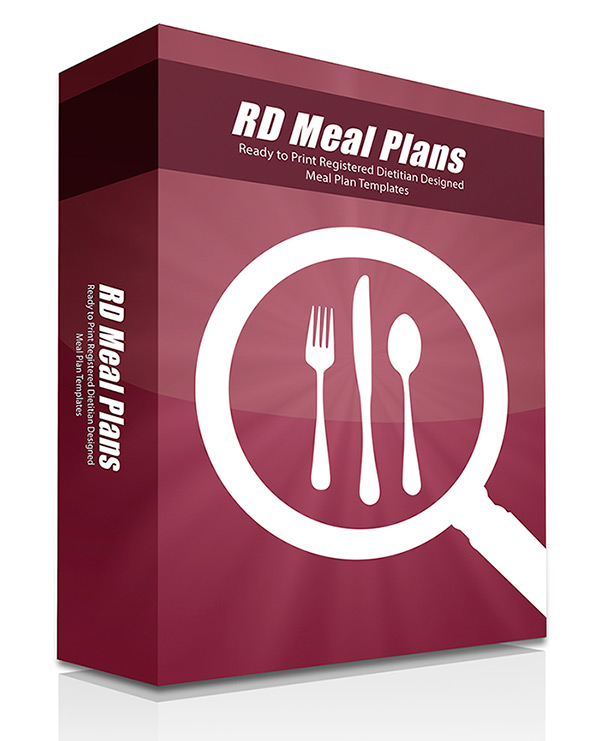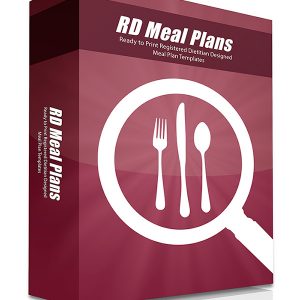GLP-1 Meal Plan Series Collection – R2 (2nd Edition)
$679.00
The all-new TeleDiets Series II GLP-1 meal plans were developed to work alongside GLP-1 medication. The plans were designed to help users balance their nutrition and mitigate many documented side effects of semaglutide use based on clinical trial research. The key components of the GLP-1 meal plans are:
- Smaller, Frequent Meals:
- Instead of three large meals, we designed the meal plan utilizing smaller, more frequent daily meals. This approach can help alleviate GI discomfort by reducing the volume of food consumed at once and easing the workload on the digestive system.
- Protein:
Our GLP-1 meal plans are higher in protein at 40% of total calories. Protein plays a critical role in a GLP-1 meal plan for several reasons:
- GLP-1 Secretion: Protein-rich foods stimulate the secretion of GLP-1, a hormone that helps regulate blood sugar levels and promote feelings of fullness. This hormonal response contributes to better glucose control and appetite regulation.
- Satiety: Including protein in meals and snacks enhances satiety and helps prevent overeating by slowing digestion and prolonging the release of hunger-suppressing hormones like GLP-1.
- Muscle Maintenance: Adequate protein intake supports muscle maintenance and repair, essential for individuals with diabetes or obesity who may be at risk of muscle loss due to rapid weight loss or inactivity.
- Blood Sugar Control: Protein helps mitigate blood sugar spikes by slowing down the absorption of carbohydrates and promoting a more gradual release of glucose into the bloodstream.
Therefore, incorporating protein-rich foods into each meal and snack is essential for optimizing the benefits of a GLP-1 meal plan and supporting overall metabolic health.
- Low-Fat and Heart Healthy fat Options:
- We have chosen to use lower-fat foods, as high-fat meals can exacerbate GI symptoms in some individuals. We opted for lean protein sources like chicken breast, turkey, fish, tofu, and legumes. We incorporated heart-healthy fat sources such as avocado, nuts, seeds, and olive oil for added fat.
- Easy-to-Digest Foods:
- The GLP-1 meal plans emphasize easily digestible foods such as cooked vegetables, well-cooked grains (such as rice or quinoa), and steamed or baked lean proteins. These options are gentler on the digestive system and may help alleviate GI discomfort.
- Fiber
Constipation can be a side effect of Semaglutide use, often resulting in sluggish bowel movements. Incorporating fiber into the diet serves as an effective measure to prevent constipation for various reasons:
- Increased Bulk: Fiber adds bulk to the stool, which helps it move more smoothly through the digestive tract. This bulkiness stimulates the muscles in the intestines, promoting regular bowel movements.
- Improved Bowel Movement: Soluble fiber absorbs water in the digestive tract, forming a gel-like substance that softens the stool and makes it easier to pass. This can alleviate constipation by making bowel movements more regular and comfortable.
- Stimulation of Gut Motility: Fiber can stimulate peristalsis, the wave-like contractions of the intestines that propel food and waste through the digestive system. This helps prevent stool from becoming stagnant in the colon, reducing the likelihood of constipation.
Incorporating fiber-rich foods, such as fruits, vegetables, whole grains, and legumes, can help maintain bowel regularity and prevent constipation. Each meal plan incorporates natural sources clinically proven to alleviate constipation that may occur as a side effect of GLP-1 use. One such source is the kiwi fruit. If kiwi is not readily available or desirable, it can be exchanged for any fresh fruit. We stress the importance of increasing fiber intake gradually and drinking plenty of water to avoid potential digestive discomfort.
- Limited Spicy and Acidic Foods:
- Spicy and acidic foods can irritate the gastrointestinal tract, so we have avoided their use in the GLP-1 meal plans.
- Hydration:
- While adequate hydration can help prevent constipation (a common side effect of some GLP-1 medications), we limit fluids with meals to avoid fullness from fluid.
The GLP-1 meal plan focuses on nutrition education and portion control to promote healthy changes. It emphasizes smaller, frequent meals rich in protein to stimulate GLP-1 secretion, enhance satiety, and support muscle maintenance. Lean protein sources and easily digestible foods are prioritized to alleviate GI discomfort, while soluble fiber options are included for GI health. The plan aims to support overall metabolic health while educating users on portion control for sustainable dietary habits.
Description
The Importance of a Nutrient-Dense Dietary Plans plays a key role while Taking GLP-1 Receptor Agonists Wegovy (semaglutide), Mounjaro (tirzepatide), and Ozempic (semaglutide) are weight loss drugs that belong to a class of medications known as glucagon-like peptide-1 (GLP-1) receptor agonists. These drugs work by increasing the release of insulin, reducing appetite, and slowing down the digestion process, which can lead to weight loss. While they can be effective in helping individuals lose weight, there are potential risks associated with their use, including the risk of malnutrition. Some of the symptoms include dehydration, cramping, diarrhea, fatigue, difficulty focusing and more severe risks including pancreatitis and thyroid cancer.
The new and improved 2nd Edition of the GLP-1 Series of Meal Plans is focused on nutrient density, higher protein and fiber content. They include the following:
GLP – 1 Weight Loss
35% carbs, 40% protein & 25% fat
Calorie Ranges 1200, 1400, 1600, 1800
Creator: Suzanne Fisher, LD RD
The GLP-1 Weight Loss meal plans were created specifically to complement GLP-1 medication. These plans aim to assist users in maintaining balanced nutrition and alleviating various potential side effects associated with semaglutide use. They emphasize smaller, frequent meals rich in high-protein, high-fiber, whole grains, fruit, vegetables, and easily digestible foods. This combination is geared towards enhancing blood glucose regulation, and progressive weight loss while minimizing potential adverse effects of GLP-1 therapy.
GLP – 1 Diabetes
40% carbs, 35% protein & 25% fat
Calorie Ranges 1200, 1400, 1600, 1800
Creator: Suzanne Fisher, LD RD
The GLP-1 Diabetes meal plans were developed to maintain glycemic stability among individuals diagnosed with non-insulin dependence who are prescribed GLP-1 medication. It’s also beneficial for those displaying hyperglycemia symptoms or with a family history of diabetes. This plan emphasizes smaller, frequent meals rich in higher protein, high fiber, whole grains, fruit and vegetables, aiming to enhance blood glucose regulation while addressing the potential side effects of GLP-1 treatment.
GLP – 1 Diabetes and High Cholesterol
40% carbs, 35% protein & 25% fat
Calorie Ranges 1200, 1400, 1600, 1800
Creator: Suzanne Fisher, LD RD
The GLP – 1 Diabetes and High Cholesterol meal plan was designed to sustain glycemic stability and manage cholesterol levels among individuals diagnosed with diabetes who are prescribed GLP-1 medication. It’s particularly beneficial for those exhibiting hyperglycemia symptoms or with a family history of diabetes alongside hypercholesterolemia. Key components include smaller, frequent meals rich in higher protein, high fiber, whole grains, fruit and vegetables, aiming to enhance blood glucose balance. Omega-3-rich foods like fatty fish, nuts, and seeds have been incorporated to further alleviate inflammation, a contributing factor to heart disease and high cholesterol. This plan is designed to help alleviate potential side effects of GLP-1 medication.
GLP – 1 Diabetes and Hypertension
40% carbs, 35% protein & 25% fat
Calorie Ranges 1200, 1400, 1600, 1800, 2000 and 2200
Creator: Suzanne Fisher, LD RD
The GLP – 1 Diabetes and Hypertension meal plan was developed to maintain glycemic control and prevent hypertension for insulin and non insulin dependent diabetics. Individuals who are showing signs of hyperglycemia or have a family history of diabetes in addition to hypertension may benefit from following this plan. Key aspects are low sodium, high fiber, lean protein, whole grains, non-starchy vegetables, and low glycemic index fruit to promote improved blood glucose balance and a healthy blood pressure.
GLP – 1 High Cholesterol
45% carbs, 30% protein & 25% fat
Calorie Ranges 1200, 1400, 1600, 1800
Creator: Suzanne Fisher, LD RD
The GLP – 1 High Cholesterol meal plan caters to individuals diagnosed with high cholesterol, heart disease, or those at risk of heart disease, including statin users. It emphasizes low-sodium options, frequent smaller meals, increased protein, high fiber, whole grains, fruit and vegetables. Inspired by the Mediterranean diet, it incorporates anti-inflammatory foods like fruits and vegetables, along with Omega-3 rich options such as fatty fish, nuts, and seeds. This plan prioritizes both soluble and insoluble dietary fiber to positively impact “bad” cholesterol levels while addressing potential GLP-1 side effects.
GLP – 1 Hypertension
40% carbs, 35% protein & 25% fat
Calorie Ranges 1200, 1400, 1600, 1800
Creator: Suzanne Fisher, LD RD
The Hypertension GLP-1 meal plan targets individuals dealing with high blood pressure. It emphasizes low-sodium foods, aiming for a daily intake below 2,300 mg. Integrating elements from the standard GLP-1 meal plan, it promotes smaller, regular meals, higher protein, fiber-rich whole grains, and while incorporating options like omega-3 fatty acids and antioxidants. Processed foods, known for their high sodium content, are excluded. This plan is tailored to alleviate potential side effects of GLP-1 medication.
GLP – 1 Obesity and Diabetes
40% carbs, 35% protein & 25% fat
Calorie Ranges 1200, 1400, 1600, 1800
Creator: Suzanne Fisher, LD RD
The Obesity and Diabetes GLP-1 meal plan caters to individuals with comorbidities of obesity and diabetes. It merges the GLP-1 meal plan’s principles, advocating for smaller, frequent meals, elevated protein, fiber-rich whole grains, and a variety of foods including antioxidant-packed fruits and vegetables. Given obesity’s link to chronic low-grade inflammation, the plan prioritizes anti-inflammatory options like whole grains, nuts, seeds, and phytonutrient-rich fruit and vegetables. Its ample fiber content supports glycemic control and satiety, aiding gradual weight loss. This plan is tailored to alleviate potential side effects of GLP-1 medication.



